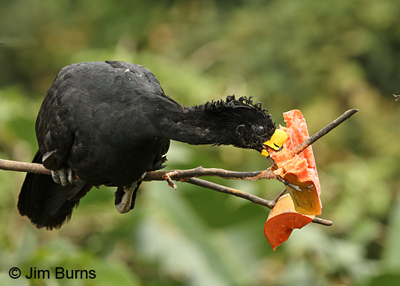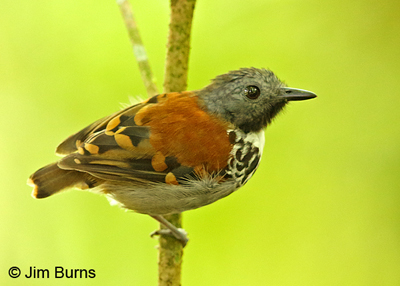
There are two givens in Costa Rica travel: there will be rice and beans at every roadside restaurant and there will be curves and potholes in every highway. For a vegan, the first makes meals easy. For a vegan with motion sickness issues, the second can be a blessing or a curse, the latter if riding with a guide who knows every curve and pothole as intimately as he knows Costa Rica’s birds, as then the curves and potholes are no deterrent to speed.
Leaving out of La Fortuna, Steven glances at me sideways—“Today is probably a meclizine day.” If he’s telling me before I ask . . . I chew two of the tiny tablets and focus on the horizon where morning sunshafts dance through patchy fog hugging the verdant foothills of the Arenal volcano. We pass hovels which speak to grinding poverty and then, around the next curve, a mansion with high walls topped by concertina wire. At home the term “drug money” would leap to mind. Steven glances at me sideways—“Drug money.”
We stop where the right hand fork of a “Y” drops into a ford across Rio Caño Negro. Last night’s rain appears to have passed, but the humidity is palpable like Septembers in Arizona. It is the rainy season in Costa Rica, but in the rainy season Costa Rica’s Caribbean is dry. We are on the Caribbean side. Steven’s explanation is lost on me. No one will be fording Rio Caño Negro here today without an amphibious vehicle.
A Spotted Sandpiper rump pumps through breakers on the far side of the river. White-collared Swifts ply the thick air. Steven hears a Bare-crowned Antbird, aptly named for the black male’s smashing bare, light blue forecrown. It’s a lifer for us, common in this area, but a notorious skulker fond of dense Heliconia thickets. We struggle to a vantage point atop the roadside embankment, there is a flicker of movement in the tangled undergrowth but the bird never calls, never reveals itself.
Farther along, fog descending, we bail out again to try for a Thicket Antpitta which Steven hears. There are five antpittas in Costa Rica, small to tiny, uncommon to rare, ground skulkers all. Good luck. We learn the call. Steven says it is close. The undergrowth is dense, the forest visually impenetrable. Steven sees the bird . . . momentarily. Deva sees movement. I see leaves and branches. We are not standing in Steven’s exact window, and we don’t know how to look. Experienced birders know this drill all too well.
By the time we arrive on the balcony of the lodge for lunch, it is pouring. Undeterred, a male Great Curassow is dining on papaya set out on an eye level feeding pole. After rice and beans, we discuss the possibility of an ant swarm tomorrow, then dodge the rain in the gardens where we talk with a photographer from Houston who had all his camera equipment stolen from his vehicle yesterday while grocery shopping in La Fortuna. Petty theft is rampant in Costa Rica. So is great birding. A calculated tradeoff, just like photography and life. Tomorrow we will find a small ant swarm attended by confiding antbirds. Tomorrow photography and life will be good.
